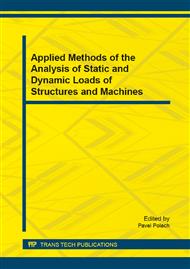p.183
p.187
p.191
p.195
p.199
p.203
p.207
p.211
p.215
Comparison of Various Means of Attachment of High Temperature Strain Gauge
Abstract:
The article deals with problems of high temperature strain gauge measurements. A preliminary experimental work for purpose of mastery of this technique after a longer break has been kicked off in VZLÚ. Initially, possibilities of usage of commercial products and two means of strain gauge attachment were verified.
Info:
Periodical:
Pages:
199-202
Citation:
Online since:
February 2015
Authors:
Keywords:
Price:
Сopyright:
© 2015 Trans Tech Publications Ltd. All Rights Reserved
Share:
Citation:


